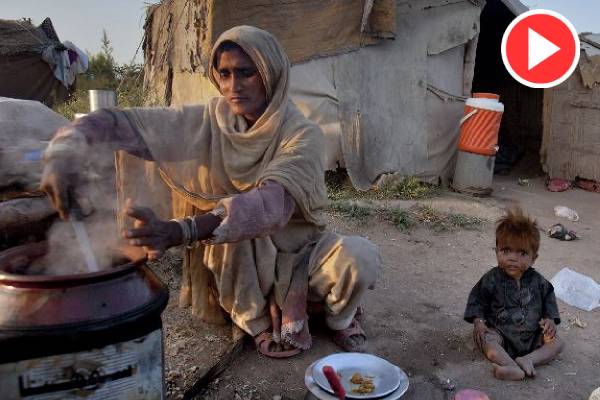
ISLAMABAD: The government is all set to make public the latest poverty figures in the country this month (March), expecting that poverty would decline despite low economic growth and high inflation. Zafarul Hasan Almas, a senior official at the Planning Commission, said.
Talking to a private television channel, he expressed hope that the poverty levels would come down to 22 percent in 2018-19 – the first year of the Pakistan Tehreek-e-Insaf government – from 24.5 percent in 2015-16.
“Our target is to release poverty numbers in March and the numbers would be published in the Economic Survey of Pakistan,” Almas said.
Almas said that in the 2015-16’s official numbers, 24.5 percent people were poor in the country but as per a 2018-19 PIDE study, “it is expected that poverty will be reduced to 22 percent.”
The official said that the Planning Commission is working on a three-year growth strategy and trying to make it equitable so that the government should be able to create opportunities in backward areas of the country. He lauded the government's cash-grant initiative during Covid-19 pandemic, saying it increased the falling consumption number.
Almas added that growth reflects opportunities and livelihood but it doesn’t necessarily translate into distribution mechanism. Among other things, he said, the crop sector’s growth rate was 0.4 percent during the Pakistan Muslim League-Nawaz (PML-N) tenure – 2013 to 2018 – and the food inflation shock was there because of this aspect. "The incumbent government is striving to overcome it,” he added.
In 2013-14, the Planning Commission had adopted the cost of basic needs (CBN) methodology and estimated the poverty line for the period as Rs 3,030.32 per adult equivalent per month. The updated poverty line for 2015-16 was Rs 3,250.28 per adult equivalent per month.
In 2013-14, 29.5 percent of the population was considered poor in Pakistan, however, the number declined to 24.5 percent in 2015-16. The rural poverty reduced from 35.6 percent to 30.7 percent while the urban poverty reduced from 18.2% to 12.5%.
In 2005-06, the national poverty ratio was 50.4 percent. In September last year, a Poverty Estimation Committee was set up to work out the latest poverty numbers in Pakistan on the basis of 2018-19 data, which are expected to be released by the end of March. TLTP
Talking to a private television channel, he expressed hope that the poverty levels would come down to 22 percent in 2018-19 – the first year of the Pakistan Tehreek-e-Insaf government – from 24.5 percent in 2015-16.
“Our target is to release poverty numbers in March and the numbers would be published in the Economic Survey of Pakistan,” Almas said.
Almas said that in the 2015-16’s official numbers, 24.5 percent people were poor in the country but as per a 2018-19 PIDE study, “it is expected that poverty will be reduced to 22 percent.”
The official said that the Planning Commission is working on a three-year growth strategy and trying to make it equitable so that the government should be able to create opportunities in backward areas of the country. He lauded the government's cash-grant initiative during Covid-19 pandemic, saying it increased the falling consumption number.
Almas added that growth reflects opportunities and livelihood but it doesn’t necessarily translate into distribution mechanism. Among other things, he said, the crop sector’s growth rate was 0.4 percent during the Pakistan Muslim League-Nawaz (PML-N) tenure – 2013 to 2018 – and the food inflation shock was there because of this aspect. "The incumbent government is striving to overcome it,” he added.
In 2013-14, the Planning Commission had adopted the cost of basic needs (CBN) methodology and estimated the poverty line for the period as Rs 3,030.32 per adult equivalent per month. The updated poverty line for 2015-16 was Rs 3,250.28 per adult equivalent per month.
In 2013-14, 29.5 percent of the population was considered poor in Pakistan, however, the number declined to 24.5 percent in 2015-16. The rural poverty reduced from 35.6 percent to 30.7 percent while the urban poverty reduced from 18.2% to 12.5%.
In 2005-06, the national poverty ratio was 50.4 percent. In September last year, a Poverty Estimation Committee was set up to work out the latest poverty numbers in Pakistan on the basis of 2018-19 data, which are expected to be released by the end of March. TLTP
